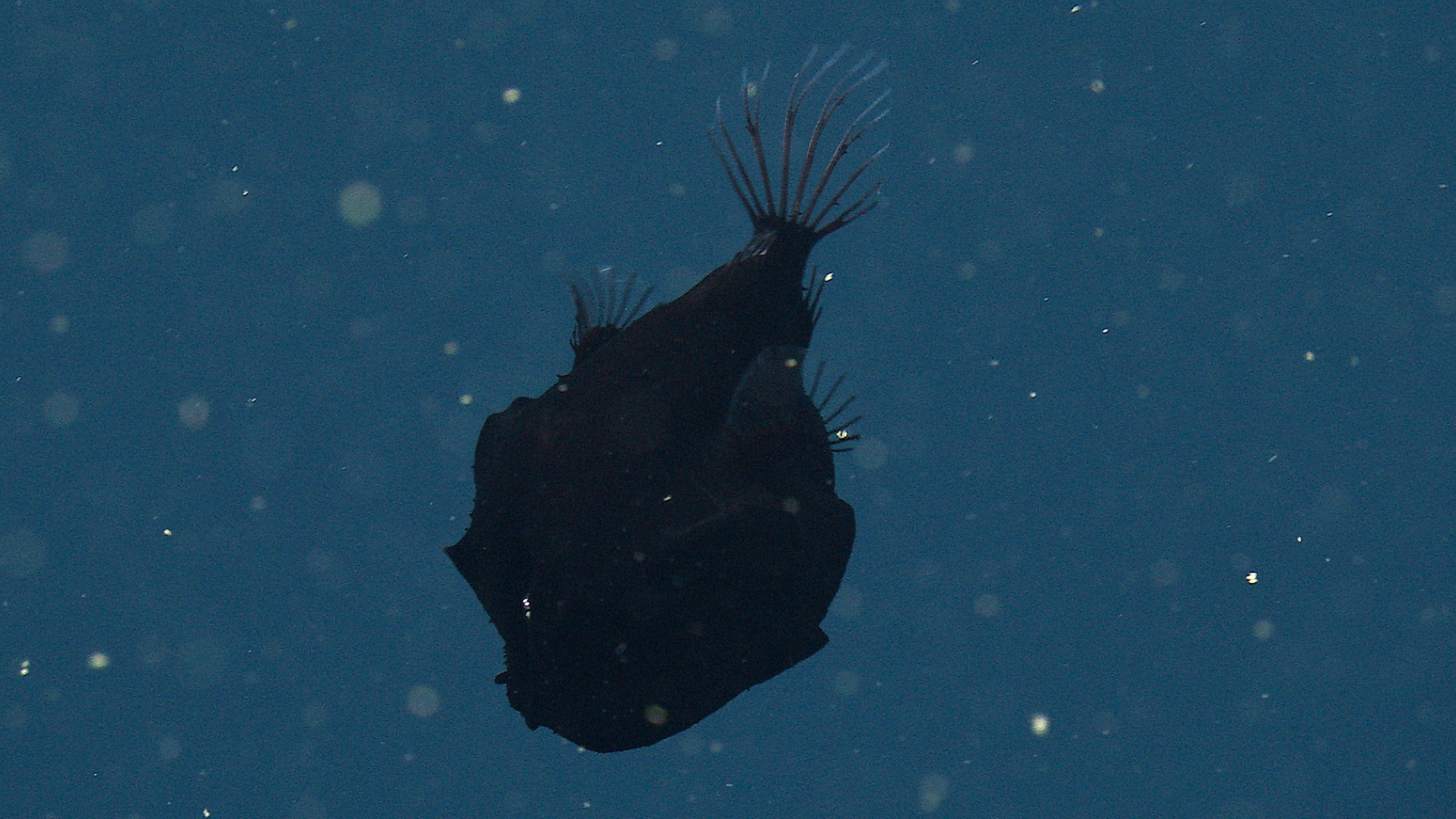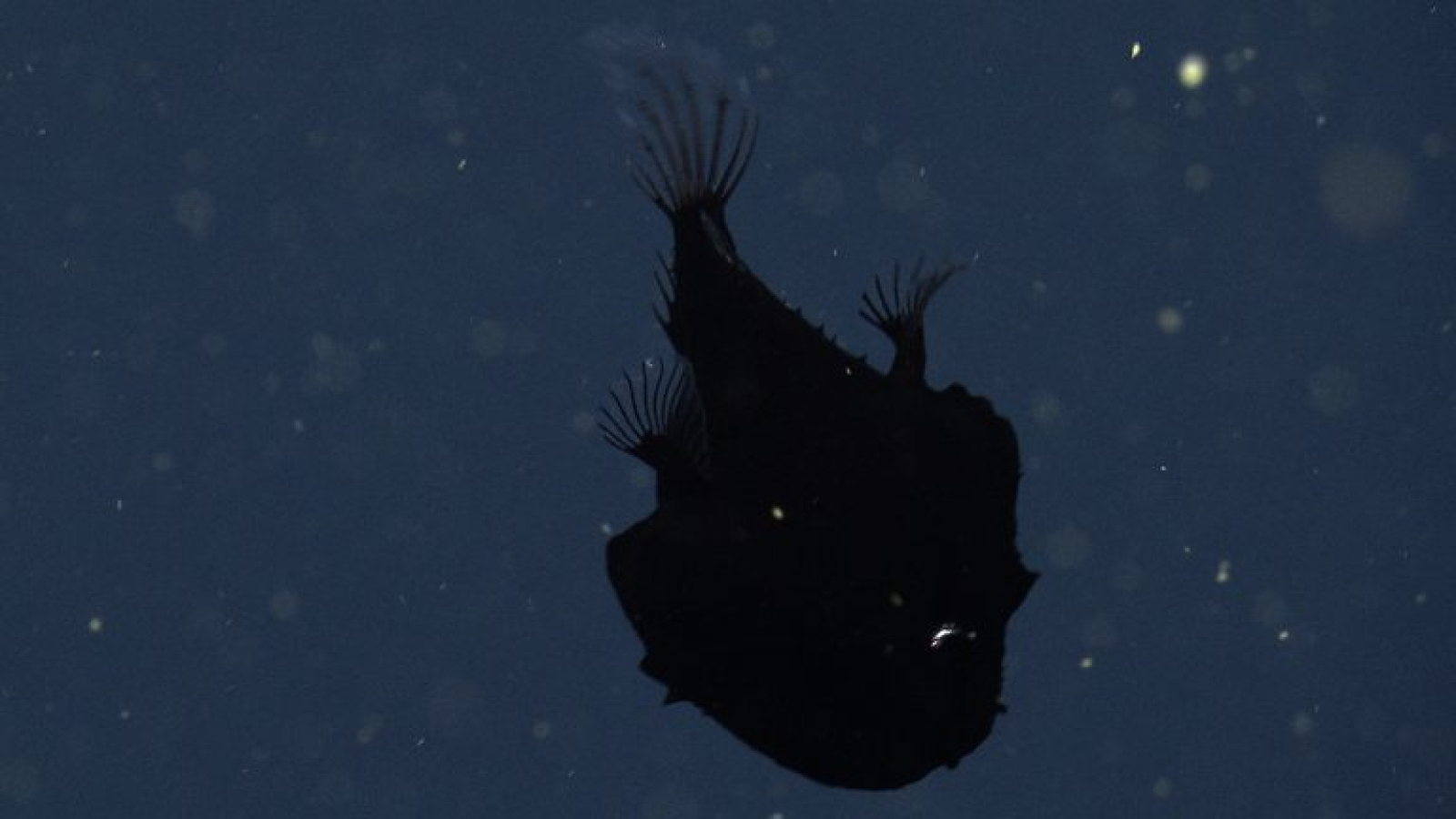
Scientists recently filmed a super-rare, ultra-black anglerfish lurking like a living shadow in the deep sea off the California coastline.
Researchers from the Monterey Bay Aquarium Research Institute (MBARI) spotted the unidentified species of dreamer anglerfish (genus Oneirodes) on Sept. 29. They filmed it 2,562 feet (781 meters) below the surface while maneuvering a remotely operated vehicle (ROV) in Monterey Canyon — a massive deep-sea canyon that spans more than 292 miles (470 kilometers) off the California coast.
The researchers were collecting tiny, spiked organisms known as phaeodarians, which float in the water column and eat falling detritus, or marine snow, when they came across the football-size female fish. It is the first dreamer anglerfish seen in Monterey Canyon since 2016 and only the ninth time scientists have spotted these creatures in the area over the last 36 years, according to an MBARI statement.
"Coming upon a lurking anglerfish is an exciting experience for anyone exploring the deep water column," Bruce Robinson, a senior scientist at MBARI, said in the statement.
A video of the encounter clearly shows marine snow swirling around the evolutionary oddity, but little is visible beyond its distinctive outline. That's because its skin is so dark it absorbs light and acts like an "invisibility cloak," Robinson said.
Related: Why do deep-sea fish look like aliens?
This species of dreamer anglerfish belongs to an exclusive club of "ultra-black" deep-sea creatures, which absorb at least 99.5% of the light that hits them. Fifteen other marine species are known to absorb this much light, according to a 2020 study published in the journal Current Biology.
These animals are so dark that "it's like looking at a black hole," study lead author Alexander Davis, a marine ecologist at Duke University and MBARI, told The New York Times when the 2020 study was released.
The study revealed that these animals' skin is tightly packed with melanosomes — cells containing the pigment melanin, which also gives human skin its color. The shape and configuration of these cells enable them to absorb almost every wavelength of light that hits the creatures' skin.
"Ultra-black skin ensures that any light that hits you, even the bright light from your own streetlamp-like lure, is completely absorbed — nothing reflects back to expose your location," study co-author Karen Osborn, a zoologist at the Smithsonian National Museum of Natural History and MBARI, said in the statement.

This enables dreamer anglerfish to remain completely hidden as they "lie secretly in wait for their prey" while using their fishing rod-like bioluminescent lures, Robinson said.
The curious camouflage also helps the dreamers to hide from predators. When the MBARI team first spotted the anglerfish, it was using its lure. But it swiftly turned off its light when it realized it was being watched.
Related: 10 bizarre deep sea creatures found in 2022
Scientists know the anglerfish in the new video is a female because of its size: Female dreamers can grow up to 15 inches (37 centimeters) long, while the males only grow to around 0.5 inch (1.3 cm) long.
In addition to being a good place to spot anglerfish in the wild, California is one of the few places where anglerfish also wash up on shore.
On Oct. 17, another pitch-black female anglerfish, known as a Pacific footballfish (Himantolophus sagamius) washed ashore at Crystal Cove State Park in southern California. This was the second time the species washed up at this location, following the discovery of another female near the same spot in 2021.







